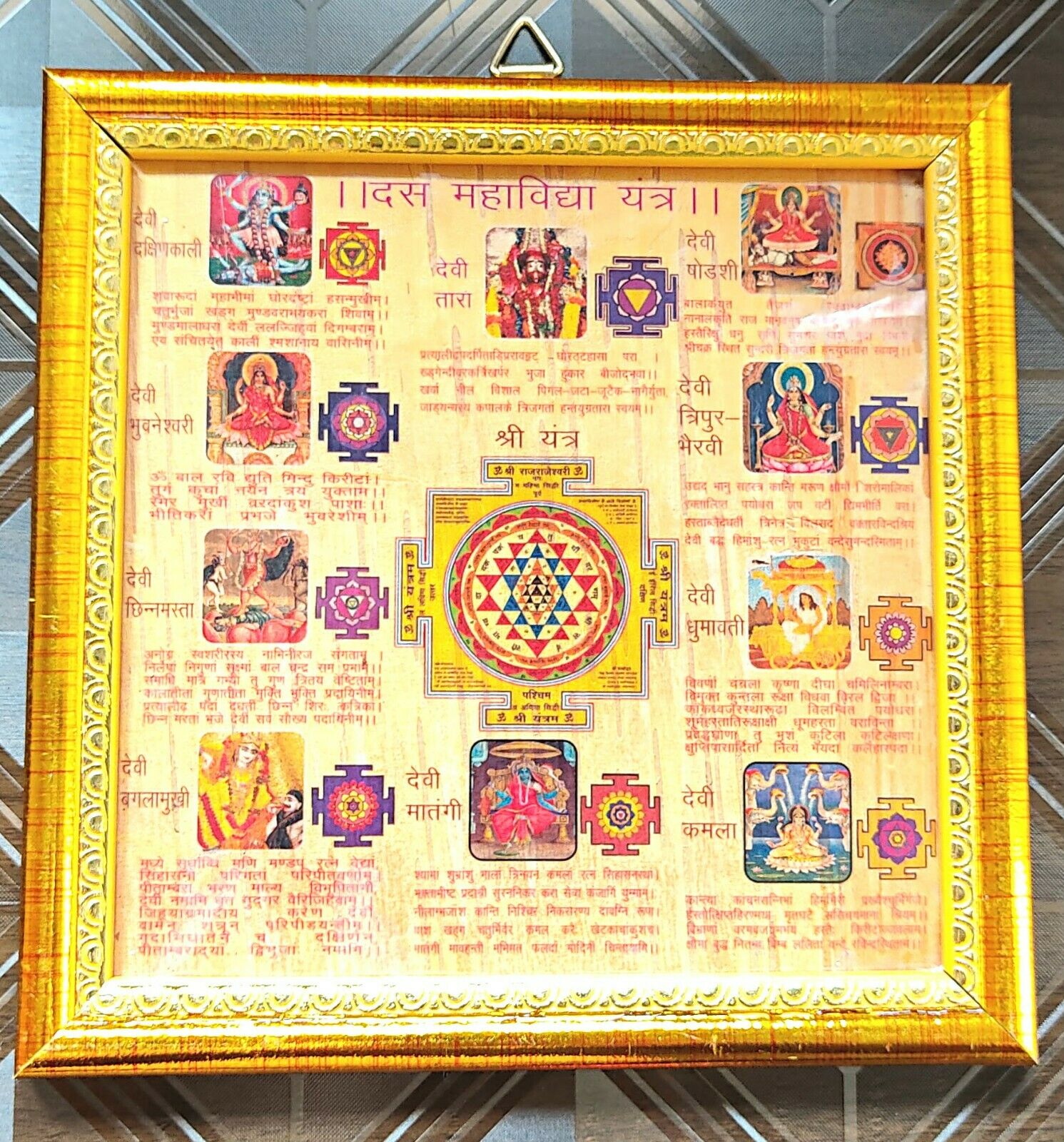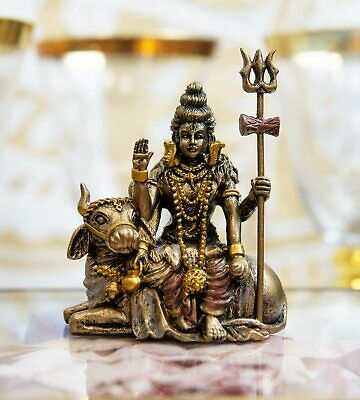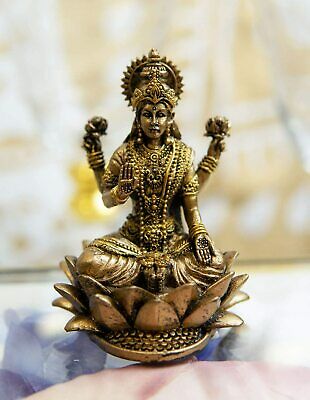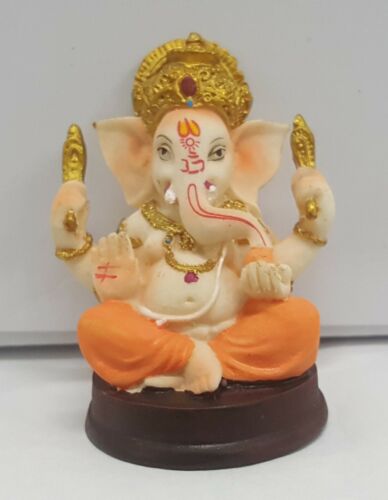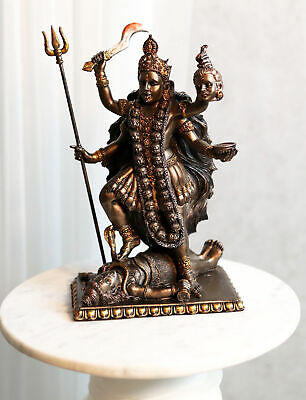-40%
Dus MahaVidya Yantra Ten Avatars of Goddes Durga Shakti Printed on Bhoj Patra
$ 15.79
- Description
- Size Guide
Description
PRODUCT DESCRIPTIONYANTRA SIZE – 7
INCH
LENGTH X 7
INCH
BREADTH
MATERIAL USED –
BHOJ PATRA SHEET ,LAMINATED & FRAMED IN CARDBOARD
FREE INSTRUCTION MANUAL
Description :
The Ten Mahavidyas are known as Wisdom Goddesses. The spectrum of these ten Goddesses covers the whole range of feminine divinity, encompassing horrific Goddess’s at one end, to the ravishingly beautiful at the other. Mahavidya means (Maha – great; vidya – knowledge) Goddesses of great knowledge.
These Das Mahavidya Goddesses are:
Kali (the Eternal Night) : The first Mahavidya is Kali. Seated on a corpse, greatly terrifying, laughing loudly, with fearful fangs, four arms holding a cleaver, a skull, and giving the mudras bestowing boons and dispelling fear, wearing a garland of skulls, her tongue rolling wildly, completely naked (digambara – clad in the directions), with just a garland of demon-hands round her waist, with heaped locks of a black cascade of hair. Thus one should meditate on Kali, dwelling in the centre of the cremation ground.
Tara (the Compassionate Goddess) :Tara is the second of the mahavidyas. She is described as seated in the pratyaaleerrha asana, on the heart of a corpse, supreme, laughing horribly, holding cleaver, blue lotus, dagger and bowl, uttering the mantra Hum, coloured blue, her hair braided with serpents, the Ugratara. She is the bestows all supernatural powers. She is the tantric form of the Goddess Saraswati.
Tripura-Sundari (the Goddess who is Sixteen Years Old) : The third Mahavidya is Shodashi (16-year-old lass), also known as Tripura-Sundari and Lalita, among a string of other names. She is the zenith of the creative cycle when the entire universe, like a flower, is in full bloom. She is the chief deity of the Sri Vidya form of worship, and is contacted either in the central circuit of the Sri Yantra, or in her own yantra, the Nava-Yoni Chakra. Her anthropomorphic qualities are brilliancy, manifestation, sweetness, depth, fixity, energy, grace, and generosity.
Bhuvaneshwari (the Creator of the World) : Means the Queen of the Universe, Maya, power of love, peace within, as void. She is like the red rays of the rising sun, with the moon as her diadem, and with three eyes, a smiling face, bestowing boons, holding a goad, a noose and dispelling fears. On the right side of Bhuvaneshvari, who in the heavens, on earth, and in the underworlds is known as the Adya, worship Tryambaka. She is the fourth Mahavidya.
Chhinnamastaa (the Goddess who cuts off her Own Head) : The fifth Mahavidya, Chhinnamastaa, looks like the red hibiscus. Her left foot forward in battle, she holds her severed head and a scimitar. Naked, she drinks voluptuously the stream of the blood nectar flowing from her beheaded body, along with her two female celestial companions. The jewel on her forehead is tied with a serpent. She has three eyes. Her breasts are adorned with lotuses. Inclined towards lust, she sits erect above the god of love – Madana, who shows signs of lustfulness, engaged in the act of love with his consort Rati. The image of Chinnamasta is a composite one, conveying reality as an amalgamation of sex, death, creation, destruction and regeneration. It is stunning representation of the fact that life, sex, and death are an intrinsic part of the grand unified scheme that makes up the manifested universe.
Bhairavi (the Goddess of Decay) : Tripura Bhairavi is Supreme Energy, Supreme Goddess of speech, as Tapas, as woman warrior. Her head garlanded with flowers, she resembling the red rays of 1,000 rising suns, smeared with red, holding milk, book, dispelling fears and giving boons with her four hands, large three eyes, beautiful face with a slow smile, wearing white gems. Bhairavi embodies the principle of destruction and arises or becomes present when the body declines and decays. She is an ever-present goddess who manifests herself in, and embodies, the destructive aspects of the world. Destruction, however, is not always negative, creation cannot continue without it.
Dhoomavati (the Goddess who widows Herself) : The colour of smoke (“dhoom”), wearing smoky clothes, holding a winnowing basket, dishevelled clothes, deceitful, always trembling, with slant eyes, inspiring fear, terrifying, sitting in a chariot, with the symbol of a raven on her chariot-flag. Symbolically, she has devoured her own husband Lord Shiva in hunger, and hence, in the form of a lustreless widow. This symbolises the supremacy of the Devi (Nature) over all other forces (even Shiva, who himself is the cosmic force of destruction). She is the great death of the death himself. She is the embodiment of “unsatisfied desires”. Her status as a widow itself is curious. She makes herself one by swallowing Shiva, an act of self-assertion, and perhaps independence.
Bagalamukhi (the Goddess who seizes the Tongue) : Bagala or Bagalamukhi is the eighth Mahavidya in the famous series of the 10 Mahavidyas.She is identified with the second night of courage and is the power or Shakti of cruelty. She is described as the Devi with three eyes, wearing yellow clothes and gems, moon as her diadem, wearing champaka blossoms, with one hand holding the tongue of an enemy and with the left hand spiking him, thus should you meditate on the paralyser of the three worlds. Bagalamukhi means “The Crane-Headed One”.
Matangi (the Goddess who Loves Pollution) : Dusky, beautiful browed, her three eyes like lotuses, seated on a jewelled lion-throne, surrounded by gods and others serving her, holding in her four lotus-like hands a noose and a sword, a shield and a goad, thus I remember Matangi, the giver of results, the Modini. Texts describing her worship specify that devotees should offer her uccishtha (leftover food) with their hands and mouths stained with leftover food; that is, worshippers should be in a state of pollution, having eaten and not washed. This is a dramatic reversal of the usual protocols. She is the ninth Mahavidya.
Kamala (the Goddess of creation, sustenance and prosperity) : Kamala, the tenth, or the last of the Mahavidyas, is with a smiling face. Her beautiful lily-white hands hold two lotuses, and show the mudras of giving and dispelling fear. She is bathed in ambrosia by four white elephants and stands upon a beautiful lotus. She is the real embodiment of Goddess Lakshmi (“Kamalekamini”), the consort of Lord Vishnu. The name Kamala means “she of the lotus” and is a common epithet of Goddess Lakshmi. Lakshmi is linked with three important and interrelated themes: prosperity and wealth, fertility and crops, and good luck during the years to come.
The worship of Das mahavidyas provides bhoga (fulfillment of materialisitic desires) and moksha (spiritual liberation).
